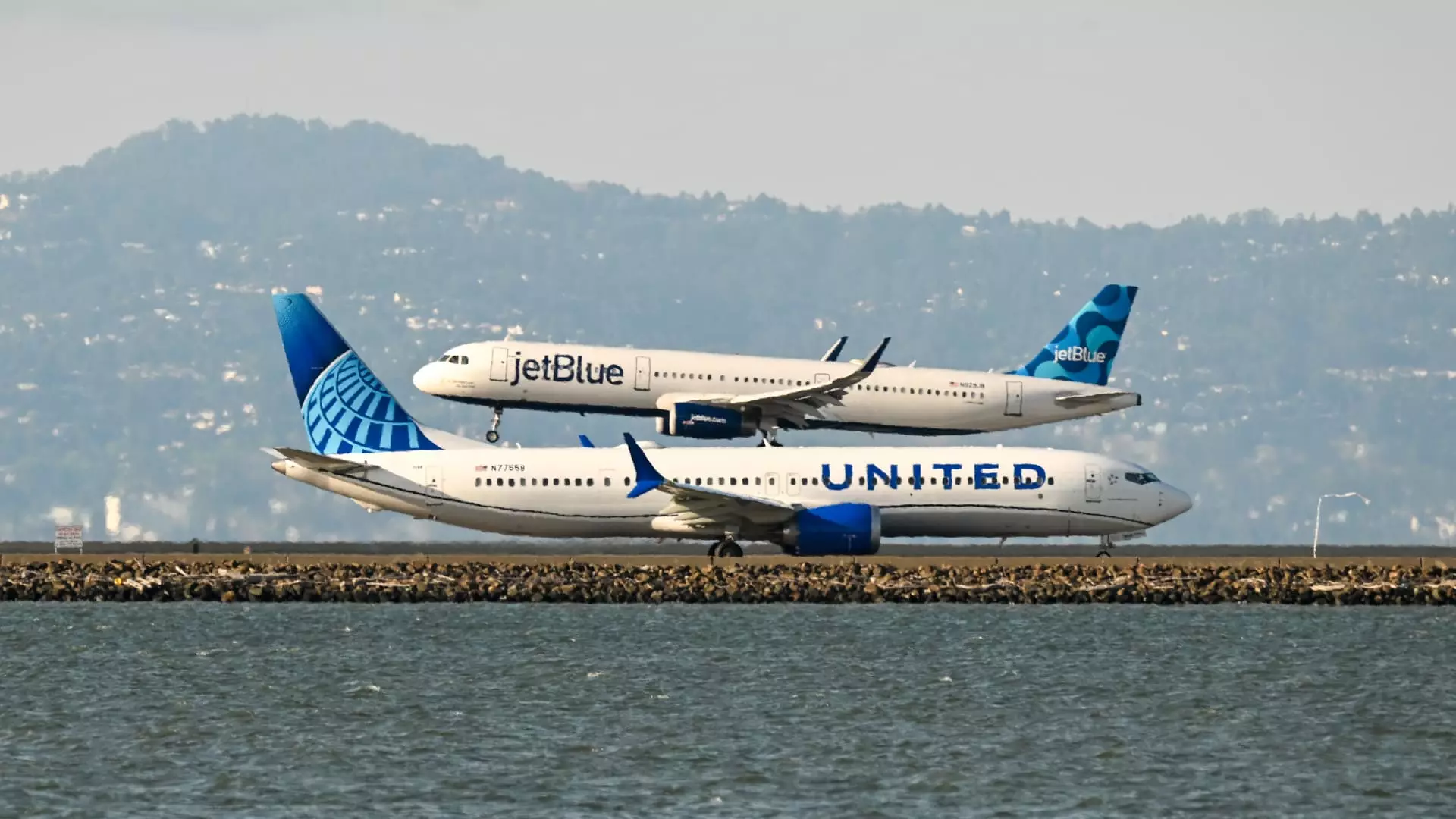In a surprising turn of events, United Airlines has reignited its presence at New York’s John F. Kennedy International Airport through a strategic partnership with JetBlue Airways, aptly named “Blue Sky.” This collaboration is not merely a footnote in the matrix of airline alliances; it represents a daring move in an increasingly competitive industry, characterized by the need for airlines to rethink their operations in the face of giants like American Airlines and Delta Air Lines. The partnership allows both airlines to sell seats on each other’s platforms, thereby enhancing their respective market reach while offering frequent flyer benefits that could significantly appeal to their loyal customer bases.
The Lay of the Land: Analyzing JFK’s Challenges
United’s previous exit from JFK in 2015 was seen as a strategic miscalculation, especially in light of recent developments. Scott Kirby, United’s CEO, has been vocal about rectifying that mistake and returning to a key airport that fuels business and leisure travel alike. While the partnership with JetBlue certainly broadens US domestic and international options for travelers, it must be noted that this collaboration comes on the heels of United’s recent struggles, such as air traffic staffing shortages that have plagued Newark, its primary hub. The timing and effectiveness of this new venture are under scrutiny, as the partnership is still subject to regulatory review. If approved, United’s ambition to operate up to seven daily round-trip flights from JFK marks a pivotal moment in their strategy—but will it be enough to do right by their past mistakes?
Strategic Moves Amidst Antitrust Concerns
Unlike the now-defunct alliance between JetBlue and American Airlines, which faced legal challenges due to antitrust issues, the Blue Sky partnership avoids the pitfalls of flight coordination but still holds immense potential. While some may argue that regulatory bodies will closely analyze this new collaboration, the fact that both airlines are focusing on customer benefits adds a compelling narrative to their alliance. This is not just about profit margins; it’s about reshaping travel options for the consumer. There’s an optimism to this partnership that brings fresh air into a stale, often stagnant airline industry riddled with customer complaints about fees, service quality, and flight availability.
Future Visions: The Long Game
The partnership may not yield immediate results, as JetBlue is slated to gain additional flights at Newark, while United’s JFK operations won’t commence until 2027 at the earliest. Nevertheless, this long-term vision could pay off if customer loyalty is leveraged wisely on both sides. Given that United has had lapses in its ability to maintain operational muscle at JFK, JetBlue’s established reputation and extensive routes could bolster whatever gaps exist. If cultivated properly, the collaboration might provide a roadmap for other airlines looking to collaborate rather than compete fiercely—something that may very well reshape industry dynamics moving forward.
Consumer-Centric Improvements
At its core, the joint venture aims to offer increased options for travelers, a rare but sorely needed change in a domain that has been marred by redundancy and poor customer experiences. The reciprocal loyalty programs bring two distinct airline cultures and customer bases together, allowing for an enriched travel experience that emphasizes value and choice. The prominent challenge ahead will be executing this convergence effectively, especially given past hiccups in their respective operations and leadership shifts within JetBlue, which may hinder a seamless transition for customers.
Catching the Crown: The Race for Market Dominance
This alliance isn’t just about cooperative marketing; it’s a strategic move to grab back some market share from persisting competitors. United’s ambition for increased presence in New York and JetBlue’s established reach in Florida and the Caribbean signifies a cross-pollination of strengths that positions them firmly against industry titans. Reflecting on the competitive landscape, it becomes clear that this venture is not just survival—it’s a fight for dominance. As passengers become more discerning in their travel choices, a strong, customer-focused, partnership approach could very well tip the scales in favor of United and JetBlue amidst the marketplace tumult.
Whether this partnership will alter the competitive dynamics of the airline industry remains to be seen, but it does lay the groundwork for a more collaborative future in air travel, provided both sides adhere to their commitment to the consumer.

